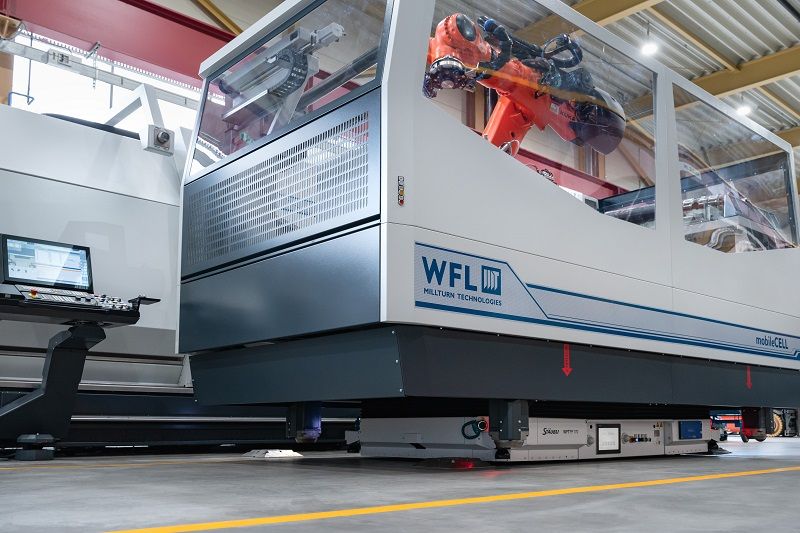WFL Millturn Develops Robot Automation Systems with FRAI Robotic Technologies
Automation tasks are becoming ever more challenging. Using intelligent software in combination with the relevant automation solutions not only enables workpieces to be loaded and unloaded but also means that machine tools can be set up fully automatically through automatic replacement of tools and clamping devices. FRAI strives to be an innovative automation partner and is therefore developing highly flexible robot systems to respond to this trend. Concepts such as the mobileCELL are a complete first and enable a wide range of expansion stages, making them as future-proof and competitive as possible.
Flexible at all levels
Different industries, series production, small batch sizes, a wide variety of machine tools and the uncertainty of many manufacturers as to whether the current product will still be in vogue next year or become a slow seller—all this calls for flexibility in production. For automation, this means keeping pace with the increasing demands: it must produce autonomously around the clock, be flexible to use, and be Industry 4.0 compliant. In addition to the classic changeover of parts, automation also takes on the other tasks such as tool change, parts transport, logistics, host computer functions, part tracking and product history.
The more complex the task, the more elements you need from the “knowhow kit.” The “knowhow kit” is what FRAI calls the solutions that have already been successfully implemented in practice and work under real production conditions. FRAI has already developed many kit elements: parts and position recognition, bin picking, reading and inscribing a DMC (Data Matrix Code), parts contour monitoring, automatic gripper exchange, jaw changes, etc. Depending on the task in question, FRAI also has a network of partner companies which cover other aspects such as host computer solutions.
Multitasking in production
There are several mega and macro trends which will shape not only automation, but also virtually all industrial sectors in the coming years. Firstly, there is individualization: there will be smaller series and more frequent product changes/innovations. Secondly, we have connectivity: everything is networked, each component has a QR code and can be tracked through to recycling.





